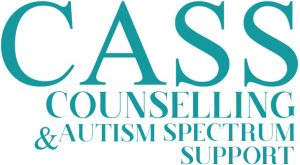Historical Uprising:
In the last part of the 1990s, Judy Singer, a humanist, and columnist Harvey Blume concocted the word “Neurodiversity” to depict conditions like ADHD, Autism, and Dyslexia. Her expectations and objectives were to move the focal point of talk about perspectives to gain away from the standard reiteration of terms for variations in neurology.
Neurodiversity in Today’s World:
Today, neurodiversity is extensively characterised to deal with learning and neurodiverse situations that recommends different neurological conditions because of typical human genome varieties. Neurodiversity advocates; advance emotionally supportive networks that permit the neurodivergent individuals to carry on with their lives, instead of being constrained or compelled to embrace uncritically acknowledged thoughts of ordinariness or adjust to a clinical ideal.
Various individuals think uniquely, not due to contrasts in culture or personal experiences, but since their cerebrums are “wired” to work in different and unique ways. Neurodiversity isn’t a word about mental condition alone. It is a word that grasps all neurological uniqueness, rhythms of neurodevelopment, and all the structures by which people can communicate and add to their reality.
Neurodiversity is a word that depicts the range of contrasts in individuals’ nervous systems. This incorporates neurodivergencies, for example, ADD/ADHD, dyslexia, OCD, and non-neurotypical. It’s expressing that typical neurology isn’t the right neurology, nor is it an objective to focus on. It’s the most well-known sort of neurology. Contrasts in neurology are typical and aren’t neurotic, and that the names used to depict these distinctions aren’t stigmatising.
The idea of neurodiversity is generally acknowledged inside medically introverted and other neurodivergent, which means not neurotypical networks. There is frequently a solid repugnance for this idea among individuals and groups who see neurological difference as a disease or flaw in our nervous system scienc. Many feel this is a danger to personhood and integrity. Neurodivergence may bring a few difficulties. However, it additionally brings new viewpoints and thoughts and accepts humanity needs this variety.
By utilising the idea of neurodiversity to represent individual neurological contrasts, a discourse is made whereby people might see labeled individuals regarding their qualities and shortcomings. Individuals with dyslexia, for instance, can be found regarding their visual reasoning capacity and enterprising rates. Individuals with ADHD can be viewed as individuals who learn and grow in a novel or unique way. While defenders of the idea of neurodiversity don’t avoid the acknowledgment that individuals with dyslexia, ADHD, neurological difference, bipolar, and other mental conditions regularly endure extraordinary difficulties, they understand that until a person’s qualities have been perceived, celebrated, and worked with, nothing generous can be cultivated concerning their troubles.
Conclusion:
Neurodiversity is a way to deal with learning, and different individuals argue that various neurological conditions result from standard variations in the human genome. This viewpoint of neurological diversity began in the late 1990s as a test to winning perspectives on neurological variations as pathological, instead of declaring that neurological contrasts ought to be perceived and regarded as a social category on a standard with gender, nationality, sexual orientation status. A condition, for example, autism, is a part of who the individual is, and to remove it is to remove the individual. Neurodiversity carries a feeling of expectation that all people, despite how they read, think, feel, and or interact, will be seen as unique and gifted. Moreover, they will be granted similar rights and advantages as some other person.
References:
Armstrong, T. (n.d.). Neurodiversity. Retrieved January 07, 2021, from https://www.institute4learning.com/resources/articles/neurodiversity/
Disabled World. (2020, September 04). What Is: Neurodiversity, Neurodivergent, Neurotypical. Retrieved January 07, 2021, from https://www.disabled-world.com/disability/awareness/neurodiversity/
Griffin, M. J. (2020, October 22). Neurodiversity: What You Need to Know. Retrieved January 07, 2021, from https://www.understood.org/en/friends-feelings/empowering-your-child/building-on-strengths/neurodiversity-what-you-need-to-know
Lorenz, T., Reznik, N., & Heinitz, K. (2017, April 12). A Different Point of View: The Neurodiversity Approach to Autism and Work. Retrieved January 07, 2021, from https://www.intechopen.com/books/autism-paradigms-recent-research-and-clinical-applications/a-different-point-of-view-the-neurodiversity-approach-to-autism-and-work
Nadachowski, W. (2019, March). Neurodiversity and the digital divide: How our neurological differences shape the way we experience the web: Strategic Design Agency. Retrieved January 08, 2021, from https://today.design/news/neurodiversity-and-the-digital-divide-how-our-neurological-differences-shape-the-way-we-experience-the-web
Robison, J. E. (2013, October 07). What Is Neurodiversity? Retrieved January 07, 2021, from https://www.psychologytoday.com/us/blog/my-life-aspergers/201310/what-is-neurodiversity


